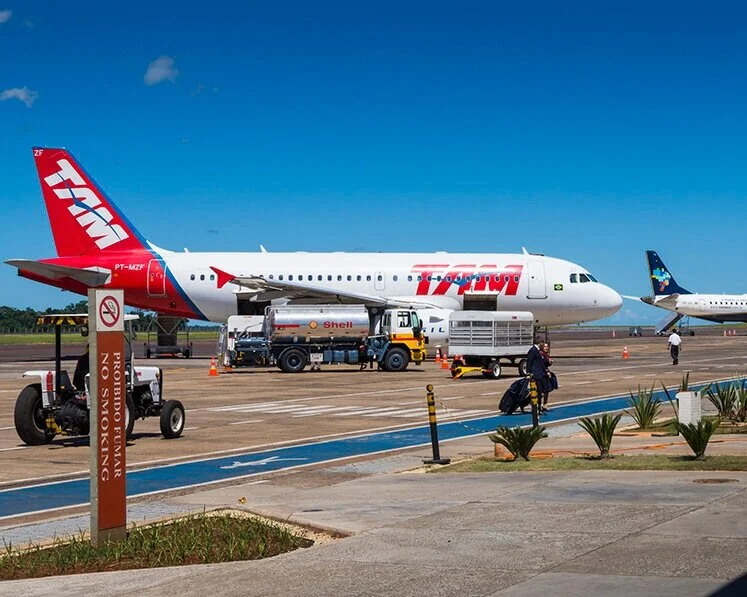The civil rights movement was governed by action versus committee. Activists were veritable “Davids vs. Goliaths” bravely challenging the legislative system which codified racism. When Robertson’s firm, along with a junior partner, Dovey Johnson Roundtree, filed a segregation complaint in 1953 on behalf of a Women's Army Corps (WAC) private named Sarah Louise Keys, it would portend the Montgomery Alabama Bus Boycotts.
Most descendants of slaves, at least those with voices in the public square, are vociferously demanding that the issue of reparations become a cornerstone of the Democrat’s electoral platform. However, as a person of color who does not agree with the premise, I understand that my position is in the minority. To be clear, I do not disagree with the fact that structural changes need to be implemented to increase parity in the economic fortunes of those whose ancestors were enslaved and those whose ancestors owned them.
However, doling out what amounts to a one-time cash settlement is short-sighted and will not address past issues of institutionalized inequality. Thus, a Commission to study what any African-American in this country can attest to, unfair and unjustified mistreatment, results in little more than a menagerie of wish lists, often to meet immediate needs. A cash settlement will never eradicate increased incidents of extra-judicial killings, that latest of which is the murder of George Floyd who was murdered by former Officer Derek Chauvin who knelt on Floyd’s neck for 8 mins 46 seconds even after he became unresponsive presumed dead.
It will not assuage the pain felt by the family and community of Breonna Taylor an essential healthcare worker who was caring for COVID-19 patients at a local hospital, and who was murdered by police who stormed her home and shot her 8 times without cause. Then, there is Ahmaud Arbery who was hunted down by 3 men who decided that he should not be jogging in their neighborhood and therefore deserved to be shot and killed.
Six years after the 2014 article titled “Unarmed People of Color Killed by Police, 1999-2014,” which was written “after the announcement that NYPD Officer Daniel Pantaleo would not be indicted for killing Eric Garner, the NAACP's Legal Defense Fund Twitter posted a series of tweets naming 76 men and women who were killed in police custody since the 1999 death of Amadou Diallo in New York,” have yet to progress. As heinous is the string of extrajudicial killings are, they are not new, they are just being caught on camera. And as much as our heart aches from these murders, the system is inherently racist and it is the little things, the death by a thousand cuts that debilitates brown and black people in America.
Until systemic racism is eradicated and until people accept their culpability in maintaining this status quo, we will never begin the process of dismantling an inherently biased governance. Without this change, it will never stop a sales clerk from following blacks around the store who are legitimately shopping. It will never prevent a group of police from terrorizing a family, brutalizing their father. Then, threatening to kill their pregnant mom trying to protect her children, one of whom purportedly took a .99 cent doll from the Dollar Store. What started as a meme is truly the norm because we can never “breathe while black,” “jog while black,” “bird watch while black,” “drive while black,” think of any pedestrian activity and add “while black,” and that is the reality of most brown and black America.
It was a nice gesture that on Juneteenth, which commemorates the June 19th date of the end of slavery in the United States, that H.R. 40 a bill sponsored by Rep. Sheila Jackson Lee (D-Texas), was televised in well-attended and animated House Judiciary Subcommittee on the Constitution, Civil Rights, and Civil Liberties’ hearings. But this bill is not an opening salvo for change; it is just another futile exercise in pushing a Sisyphean boulder up the proverbial hill. The bill’s title spells out its intent, which is not one of action, but bureaucracy since H.R.40 has been advanced to create a “Commission to Study and Develop Reparations Proposals for African-Americans.”
Anyone who has spent significant time in the workforce, private or public, understands the efficacy of commissions and panels, and most if honest would say they are “a waste of time,” and resources. In this respect, it is another bite at the apple of assuaging “white guilt,” through some means of pay-off. It is the latest version of 40-Acres and a Mule. That the politicians jumped on this bandwagon smacks of pandering. It is as if they believe at best that “Reparations” is the magic catchphrase that will guarantee to deliver black votes to them in 2020.
Alternatively, and more cynically, they are selling reparations as a panacea to the reemergence of Jim Crow-era tactics that currently beset the nation, particularly in the South. From a legislative perspective, reparations do not address the urgent actions being implemented around the country to dismantle the protections from disenfranchisement, such as gerrymandering, efforts to overturn the Voting Rights Act, law enforcement killings of black men, women, and children, as well as mass incarceration.
It indeed is as they say in the South, it is “broke and needs fixin’;” but equally true is the sentiment openly expressed by Senate Majority Leader Mitch McConnell (R-KY), and privately felt by many others:
I don’t think reparations for something that happened 150 years ago for whom none of us currently living are responsible is a good idea,” McConnell said. “We’ve tried to deal with our original sin of slavery by fighting a civil war, bypassing landmark civil rights legislation. We elected an African American president. (Source: MSN.com)
Thus, 150 years later it seems as if those who were against giving slaves 40 acres on which to rebuild their lives, are of the same ilk as those who felt that providing slaves their “freedom’ was payment enough.
Henry Louis Gates, Jr. explained how "Union General William T. Sherman’s Special Field Order No. 15, issued on Jan. 16, 1865, prescribed the 40 acres policy, but not the mule. That “would come later. But what many accounts leave out is that this idea for massive land redistribution was the result of a discussion that Sherman and Secretary of War Edwin M. Stanton held four days before Sherman issued the Order, with 20 leaders of the black community in Savannah, Ga., Where Sherman was headquartered following his famous March to the Sea. The meeting was unprecedented in American history.
This policy was actionable and substantial and would have radically changed the nature of this country. IT WOULD have been an actual reparation for the country’s “original sin,” because of the power inherent in the permanence of land, and self-governance.
Gates continues to explain that “Section two of the order specifies that these new communities, moreover, would be governed entirely by black people themselves … on the islands, and in the settlements hereafter to be established, no white person whatever, unless military officers and soldiers detailed for duty, will be permitted to reside; and the sole and exclusive management of affairs will be left to the freed people themselves … By the laws of war, and orders of the President of the United States, the negro [sic] is free and must be dealt with as such. With this Order, 400,000 acres of land — a strip of coastline stretching from Charleston, South Carolina, to the St. John’s River in Florida, including Georgia’s Sea Islands and the mainland thirty miles in from the coast,” as Barton Myers reports — would be redistributed to the newly freed slaves. The extent of this Order and its larger implications are mind-boggling, actually.” (Source: PBS)
The crux of the matter and any discussions about reparations that do not institutionally compensate the descendants of slaves is a moot point. And even, then, it cannot and will not fix the view by some that people of color in this country are inferior and undeserving of equal treatment under the law de facto or de jure, especially in employment and equitable pay, which is the real currency of freedom in today’s world. It also will never prevent the institutional inequities which exist, not just for African-Americans, but all people who were not blessed by the lottery of birth to be born into extreme wealth.
In this era of globalism, when foreign investors hold nearly “30 million acres of U.S. farmland, and the remainder held by corporations and farmers, the possibility of achieving this ‘commensurate’ reparation equal to the pain, suffering, torture, and horrors of 400-years of slavery, as initially ordered, will never be delivered. In lieu of this, we cannot let this election slogan become the ultimate manifestation of our desires for justice and equity. It is not up to others to make right what is wrong in our society, and with our lives. It is up to us to push, to demand, to protest, and to legislate, otherwise “Black Lives [will not] Matter,” nor will the lives of all the great Civil Rights martyrs from emancipation until today.
Related Articles
Editor-in-Chief: @ayannanahmias
LinkedIn: Ayanna Nahmias



















